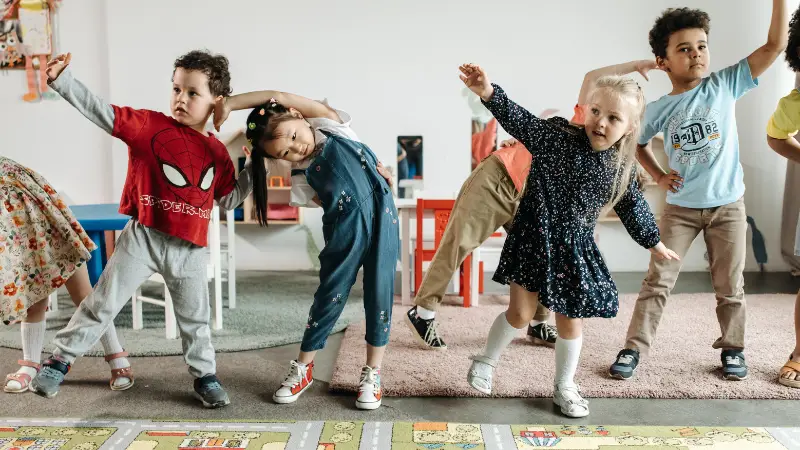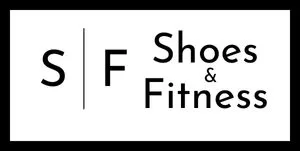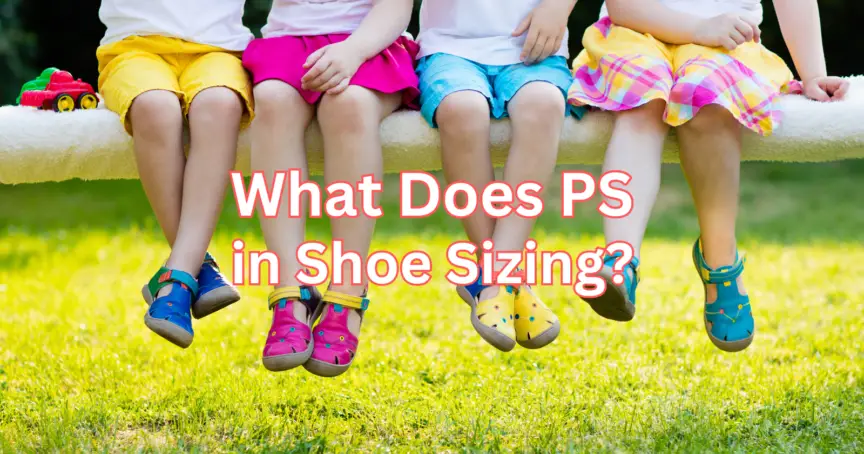ShoesandFitness.com is supported by our readers. We may earn a commission when you purchase through links on this page. Our content is checked for factual accuracy by our editorial team before being published.
Welcome to the thrilling world of shoe terminology! If you’re a parent or someone involved in the care of young children, you’ve probably come across a plethora of mysterious terms and abbreviations. In this article, I’m going to unravel the enigma of “PS” in shoes. So, lace up your sneakers and get ready to embark on this exciting, informative, and friendly adventure in footwear!
Origins and Meaning of PS in Shoes
PS stands for “Preschool” in the shoe universe. This term specifically refers to shoes designed for children who typically fall within the age range of 3 to 5 years old. PS sizes accommodate the unique needs of little feet that are constantly growing and developing.
Categorizing shoes by age groups serves a vital purpose. It ensures that children’s shoes are designed to meet the specific developmental needs of their feet during each stage of growth. By having age-based shoe categories, brands can create footwear tailored to provide the right balance of support, flexibility, and protection.
Decoding the B Shoe Size: The Mystery of Shoe Widths
Here is an easy to use size chart for PS-size shoes:
| Shoe Size | Size in Inches from heel to toe |
| 10.5C | 6.5 inches |
| 11C | 6.9 inches |
| 11.5C | 7 inches |
| 12C | 7.2 inches |
| 12.5C | 7.4 inches |
| 13C | 7.6 inches |
| 13.5C | 7.8 inches |
| 1Y | 7.9 inches |
| 1.5Y | 8 inches |
| 2Y | 8.2 inches |
| 2.5Y | 8.3 inches |
| 3Y | 8.5 inches |
PS Shoe Sizing: How it Differs
PS shoe sizes are distinct from other shoe sizing categories, such as Infant, Toddler, and Grade School. The differences between these groups lie in the age range they cater to and the corresponding foot sizes.
To help you navigate the world of children’s shoe sizes, we’ve compiled a handy conversion chart for PS, Infant, Toddler, and Grade School:
| Age Group | Age Range | Shoe Sizes |
| Infant | Birth to 1 year | 0C-3C |
| Toddler | 1-3 years | 4C-10C |
| Preschool (PS) | 3-5 years | 10.5C-3Y |
| Grade School | 6-10 years | 3.5Y-7Y |
Note that “C” stands for “Child” and “Y” for “Youth.”
Key Features of Preschool Shoes
Preschool shoes are designed with a few key elements in mind: comfort, durability, and proper foot development. To achieve these goals, brands focus on the following:
Flexible soles: PS shoes need to have flexible soles that allow for natural movement, promoting the development of strong, healthy feet.
Lightweight materials: Preschoolers are energetic and need lightweight shoes that won’t weigh them down during playtime.
Durable construction: Since little ones can be rough on their shoes, durability is crucial. Reinforced toes, double stitching, and high-quality materials help withstand the wear and tear of daily use.
Easy on/off: Hook-and-loop closures, elastic laces, and other user-friendly features make putting on and taking off shoes a breeze for both children and caregivers.
Popular brands for PS shoes include Nike, Adidas, New Balance, and Skechers, offering a wide range of styles and designs that cater to various activities and preferences.
Choosing the Right PS Shoes
To find the perfect PS shoes for your child, follow these steps:
- Measure your child’s foot: Use a measuring tape or a ruler to measure their foot from heel to toe. Always measure both feet, as one may be slightly larger than the other.
- Select the right fit: Choose a shoe size that accommodates the larger foot, allowing for about a thumb’s width of space between the longest toe and the shoe’s end.
- Consider the activity: Different activities require specific types of shoes. Running shoes, for example, offer more cushioning, while soccer cleats provide better traction on grassy fields.
- Don’t rush: Avoid purchasing shoes that are too big, thinking your child will “grow into them.” Ill-fitting shoes can cause discomfort and negatively impact foot development.
Common mistakes to avoid when choosing PS shoes include:
- Relying solely on age or shoe size: Always measure your child’s feet, as growth rates can vary.
- Ignoring comfort: Prioritize comfort over style, as uncomfortable shoes can lead to pain and developmental issues.
- Overlooking the importance of arch support: Good arch support is vital for proper foot development and overall comfort.

Frequently Asked Questions
To further assist you in your quest for the perfect PS shoes, we’ve addressed some common concerns and queries:
How often should I replace my child’s shoes?
Children’s feet can grow rapidly, so it’s essential to check their shoe size every few months. Replace shoes when they become too small or show signs of excessive wear.
Can I buy used shoes for my child?
While buying used shoes can save money, it’s generally not recommended. Shoes tend to conform to the original wearer’s foot shape, which could cause discomfort or harm to your child’s foot development.
What if my child has wide or narrow feet?
Many brands offer shoes in various widths. Always measure your child’s feet accurately and consult size charts to find the best fit for their unique foot shape.
How To Find Shoes From A Picture? The Essential Apps to Use
Conclusion
We’ve dived into the world of PS shoes, from their origin and meaning to essential features and how to choose the perfect pair. Remember that proper footwear is crucial for your child’s comfort and healthy foot development. By understanding the term “PS” in shoes and following our tips, you’ll be well-equipped to select the best footwear for your preschooler. So, march forward confidently, knowing you’re giving your child the support they need for their tiny adventures!


